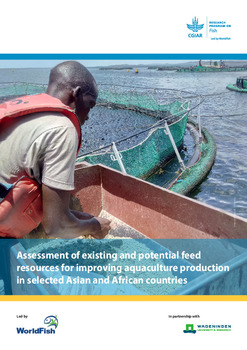Assessment of existing and potential feed resources for improving aquaculture production in selected Asian and African countries

Citation
Agboola, J.O.; Yossa, R.; Verreth, J. (2019). Assessment of existing and potential feed resources for improving aquaculture production in selected Asian and African countries. Penang, Malaysia: CGIAR Research Program on Fish Agri-Food Systems. Program Report: FISH-2019-03
This report provides a comprehensive assessment of existing and potential feed resources for improving aquaculture productivity in Bangladesh, Myanmar, Malaysia, Egypt, Nigeria and Zambia. These countries depend heavily on imports for their supply of quality feed ingredients. The viability and feasibility of ingredients for aquafeed production are scrutinized based on a number of criteria, including availability (more than 1000 t per year), affordability, nutritional value, associated constraints (presence of antinutritional factors and mycotoxins), feed-food competition, environmental impact and sociocultural implications. A comprehensive literature search (both grey and peer-reviewed) coupled with national and international databases were used to create lists of available feed ingredients in each country. Additional information was derived through administration of semi-structural questionnaires to fish farmers, feed manufacturers, ingredient suppliers and other feed experts. In general, ingredients of plant origin are commonly available in the countries surveyed. The most common plant protein sources are soybean meal, mustard oil cake, sesame meal, sunflower meal, groundnut cake, copra cake, palm kernel cake and cotton seed meal. Animal protein sources are limited to by-products such as poultry meal, feather meal and blood meal. In addition, energy and fiber ingredients are abundantly available and are mainly of plant origin. Novel feed ingredients such as insects, algae, worms and single-cell proteins could be considered as future feed ingredients once they are deemed available. Information on nutritional composition and digestibility of ingredients produced in the targeted countries is scarce, and where it exists it is nonexhaustive and disjointed. Therefore, holistic nutritional analyses of these ingredients are recommended in the future. Moreover, substantial efforts should be dedicated at improving the use of these ingredients in the feeds for various fish species cultured in each country.
Permalink
Date Available
Type
Publisher
Copyright
CC BY 4.0
Research Themes
Topics
Language